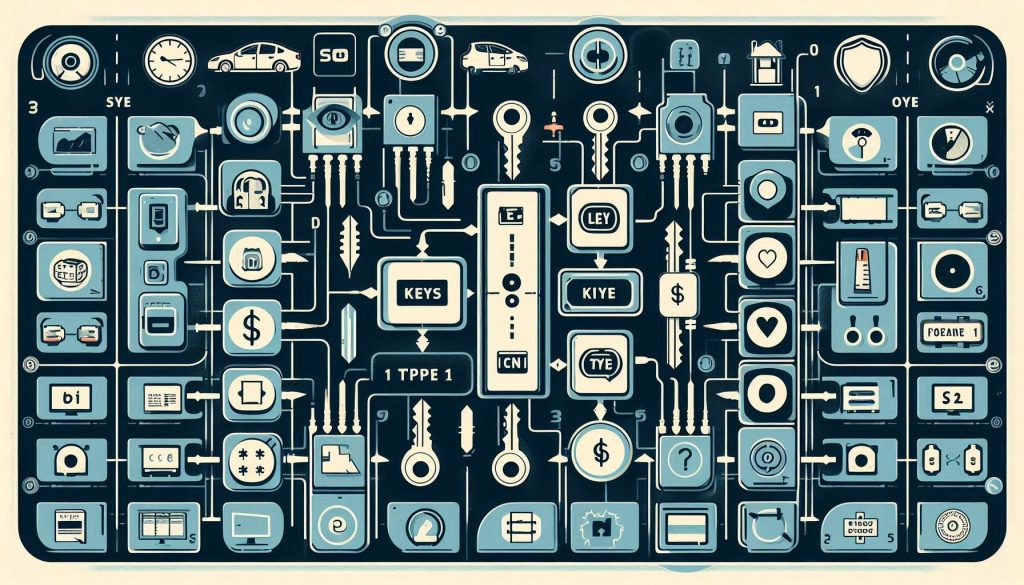
Key Variations and wise choice between Type 1 and Type 2 in SOC 2
Many companies find it difficult to decide which of SOC 2 Type 1 and Type 2 reports to use. These audits evaluate data security policies and procedures of an organization. The main distinctions between SOC 2 Type 1 and Type 2 will be discussed in this post, therefore guiding your choice of the appropriate one for your circumstances.
About ready to improve your compliance game?
Investigating SOC 2 Type 1 and Type 2
In evaluating an organization’s security controls, Type 1 and Type 2 reports have various uses. These studies support businesses in demonstrating their dedication to data security and fostering confidence among customers and partners.
Important Variations and Commonalities
Though in important ways they differ, SOC 2 Type 1 and Type 2 reports have common characteristics. Based on comparable criteria, both evaluate cybersecurity measures. Their range, length, and depth of assessment differ, nevertheless.
Aspect ofSOC 2 Type 1:Soc 2 Type 2
Time ScopeOne point of reference: three to twelve months.
Less costlymore costly.
Velocity of EntertainmentAcceleratedLonger procedures
Depth of assessmentControlling designDesign and operational efficiency
DomainAssessment of snapshotsConstant success
Type 1 reports give a fast view of the controls. They fit companies just starting out in compliance. Reports of type 2 show long-term success. They offer closer understanding of security techniques.
The Trust Services Criteria apply both kinds. These address confidentiality, privacy, security, availability, and processing integrity. The depth and evaluation period are where the largest variations exist.
Cheaper and faster are type 1 audits. They look for adequately designed controls and whether they exist at all. Type 2 audits demand additional time and money. They examine how effectively over time controls operate.
Usually beginning with Type 1, organizations proceed to Type 2. This strategy lets security measures get gradually better. It also enables meeting rising customer expectations for strong security policies.
An overview of the five trust services criteria
Five Trust Services Criteria (TSC) underpin SOC 2 reports. The core of service organization controls is these criteria. The necessary TSC, security, protects system resources from illegal access.
Availability guarantees that systems can be used and operated upon. Confidentiality guards private data from public release.
Processing integrity ensures approved, correct, whole system processing. With its eight extra emphasis points, privacy concerns handling of personal data. These standards enable companies to keep strong data security protocols.
Businesses have to select pertinent TSCs according on their operations and client requirements.
Any good company connection starts with trust, and SOC 2 Trust Services Criteria offer the structure to help create that trust.
The next section will explore SOC 2 Type 1: Definition and Functionality.
Type 1 SOC 2: Definition and Functionality
SOC 2 Type 1 audits probe a company’s security at a given moment. These audits enable companies to demonstrate robust data security policies already in place.
Type 1 SOC 2 Audit Goals and Approach Evaluating an organization’s security controls depends much on type 1 audits. These audits evaluate the control design at a given date, therefore offering a moment of the company’s compliance situation.
goal:
Check if control design is effective.
Create a first baseline for compliance.
Point up security flaws in the policies.
Show dedication to data protection.
Procedure:
Deal with a certified public accountant (CPA) company.
Specify audit scope and trust-based service standards.
Organize pertinent records.
Interview important staff members.
Go over policies and practices.
Evaluate control design versus standards.
Two to four weeks for a draft report
Execute audit (two to four weeks additional).
The cost:
Usually range: $10,000 to $30,000
Factors influencing cost:
size of organization
System Complexity
Count of trust criterion for services
Deliverables are:
comprehensive analysis of control design
Management’s Assertion Letter
View point of an independent auditor
Description of the system of the service company
Rewards:
speedy certification of compliance
points up places that need work.
strengthens reputation with customers
supports legal requirements.
Restrictions:
Point-of- time evaluation
does not evaluate operational success
Might not meet every demand of every stakeholder.

Features of SOC 2 Type 1
For companies, SOC 2 Type 1 audits have a number of important advantages. They offer a moment in time view of the security mechanisms of an organization. This evaluation lets companies quickly find and fix any weaknesses in their security systems.
Certifications in SOC 2 Type 1 can be a competitive advantage and help to build client confidence. Their dedication to best standards and data security is evident. Companies so can observe shorter sales cycles and higher client acquisition.
More thorough Type 2 audits follow from a SOC 2 Type 1 audit, which also prepares the basis for next compliance initiatives.
SOC 2 Type 1 certification is evidence of an organization’s commitment to security and customer confidence, not only a box-check.
SOC 2 Type 2: Assessing Extended Effectiveness
SOC 2 Type 2 audits examine throughout time how well a company’s security systems perform. These audits track a company’s controls for at least six months to show they’re working.
Audit Objective and Method for Type 2 SOC 2 Type 2 audits evaluate throughout time the degree of security control efficacy of an entity. This thorough three to twelve month evaluation of cybersecurity policies offers a whole picture of operational consistency.
Goal: Confirm long-term adherence to security policies
Share continuous dedication to data security.
Gain clients’ and partners’ trust.
Meet standards for regulatory compliance.
Audit chronology:
Six to twelve months is evidence collecting time.
Two to six weeks for draft development
Four to six weeks for the audit completion
Total process: 7 to 14 months roughly
Important Action Items:
Initial readiness evaluation
Planning and scope defining
Application of regulations
Ongoing observation and recording
Engagement by external auditors
Data collecting and study of evidence
Report writing and review process
Financial Factors:
Typical audit cost: $30,000
Factors influencing price are organization size, complexity, scope.
Function of the auditor:
Review internal control systems.
Evaluate approaches to risk management.
Review systems of information.
Check compliance using trust-based service standards.
Examine data and records.
Transcript Elements:
Auditer’s assessment
Specific results and observations
The claim of management
System explanation
Test results and conclusions
Advantage:
improved reputation among stakeholders
Better posture of security
In the market, competitive advantage
Lowered danger of data leaks
Simplified initiatives on compliance
Soc 2 Type 2’s advantages
Businesses stand to gain much from SOC 2 Type 2 audits. Their show of a company’s dedication to data security builds consumer confidence. This thorough assessment approach offers a whole picture of compliance throughout time.
It enables businesses to enhance their data security measures by pointing up areas needing work in security policies.
Businesses doing SOC 2 Type 2 audits develop a competitive advantage. The certification shows their will to uphold strong security policies. It also helps satisfy industrial norms and legal criteria.
This certification lets companies draw in fresh business and keep current ones. Let us look at the elements to take into account while deciding between SOC 2 Type 1 and Type 2 in order to investigate the decision-making process even more.
Selecting Your Company’s Appropriate SOC 2 Report
The needs and objectives of your business will determine the SOC 2 report you need. As you decide, take into account your present security policies, customer needs, and future expansion plans.
Key Elements to Think About
Choosing the appropriate SOC 2 report calls for thorough evaluation of several important elements. Companies have to assess their particular requirements and situation in order to decide with knowledge.
Match your SOC 2 decision to the objectives of your business. Type 1 fits startups looking for rapid validation; Type 2 fits established companies striving for long-term trust.
Many customers—especially in regulated sectors—demand SOC 2 Type 2 reports. See whether particular compliance requirements exist for your target market.
Resources Availability: SOC 2 audits call for time and money. Type 1 is faster and less expensive; Type 2 requires more resources but provides better guarantee.
Evaluate your present security situation for maturity of controls. While Type 2 fits companies with established controls, Type 1 works for more modern systems.
Type 1 offers a picture; Type 2 spans several years. Think through your urgency and the degree of confidence required.
Industry Standards: Because of tougher rules around sensitive data and risk assessment, some sectors—like finance or healthcare—may prefer Type 2.
Competitive Advantage: In markets where security is a main difference, a Type 2 report can differentiate you.
Future Growth Plans: A Type 2 report could help you down road if you intend to enter new markets or grow.
The route of moving from SOC 2 Type 1 to Type 2 will be discussed in the following part.
Going from Type 1 to Type 2
Changing from SOC 2 Type 1 to Type 2 reveals a company’s commitment to continuous data security. This action calls for focused maintenance of tight controls over time and efficient departmental cooperation.
Usually starting with Type 1 as a temporary fix, companies go to Type 2 to show their solutions are long-term effective.
Type 2 assessments force companies to keep vigilant and enhance their security systems. The change is lengthening the audit time and compiling more proof of control efficiency.
It also implies configuring improved monitoring systems and teaching staff on novel techniques. Showing a great dedication to safeguarding private information, this approach helps establish confidence with partners and clients.
Finally, the importance of consistent compliance initiatives
For businesses trying to establish credibility and increase their footprint, SOC 2 compliance is very vital. Selecting Type 1 or Type 2 reports will rely on the particular requirements and objectives of your company.
While Type 2 gives a fuller, long-term picture of security control efficacy, Type 1 presents a short glimpse of them. Maintaining SOC 2 compliance is still mostly on ongoing security practice improvement and monitoring.
Automated tools help to simplify this procedure, therefore enabling more affordable and manageable continuing compliance.